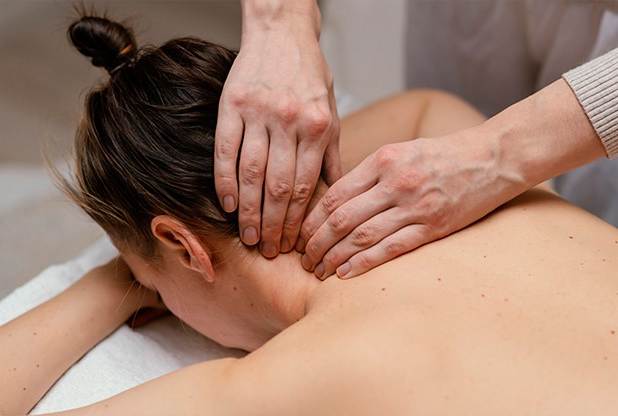How Remedial Massage Can Relieve Muscle Tension and Pain
In our modern, fast-paced world, where stress and physical strain seem almost unavoidable, our muscles often bear the brunt silently until discomfort and pain make themselves felt. Muscle tension and pain can truly disrupt our daily routines, affecting our productivity and overall well-being. That’s where remedial massage steps in – a tried-and-true therapeutic method that offers a way towards relief and healing.
Typically, the treatment is directed at both muscular and connective tissue and can help address your everyday musculoskeletal needs, whether it’s myofascial pain or biomechanical dysfunction. If you’re interested in knowing more about remedial massage and how it can relieve muscle pain, we have you covered. Read along!
What is Myotherapy?
Myotherapy is essentially a massage therapy that helps reduce pain and make your body move better. It’s good at finding and dealing with sore spots in your muscles, fixing how you move to avoid hurting your joints, and helping you get back to normal after an injury.

The therapy can also help your muscles recover faster after exercise and makes them more flexible. So, it’s like a combination of massage, exercise help, and pain relief all in one.
How Does It Differs from Remedial Massage?
In simple terms, a remedial massage therapist’s role is to address the symptoms of musculoskeletal pain and dysfunction. On the other hand, a myotherapist goes a step further by addressing both the immediate symptoms and the root cause – whether it’s related to behavior, posture, muscular imbalances, or structure. Myotherapy mainly helps the body recover from musculoskeletal dysfunction and takes advantage of techniques like muscle stretching, deep tissue massage, cupping, musculoskeletal alignment, and a range of other rehabilitative exercises.
When you visit a remedial massage therapist near you, they primarily use a range of hands-on massage techniques to relieve muscle tension and promote relaxation. They might incorporate massage oils to enhance the process. In contrast, myotherapists concentrate on trigger point therapy, which targets existing discomfort and aims to prevent future injuries. This technique involves applying pressure to specific points on the body to alleviate discomfort and tension.
Both remedial massage and myotherapy offer valuable approaches to improve your musculoskeletal well-being. If you experience any ailments that cause you stress, it’s always good to book in and see your medical practitioner or a professional myotherapist to get treated and heal faster and better.
How Beneficial is Myotherapy in Relieving Pain?
Myotherapy addresses pain by tackling the diverse mechanical triggers that contribute to discomfort. This involves elements like muscle trigger points, irregular movement patterns that strain joints, and restricted mobility that can lead to compensatory movements. With a keen focus on these factors, a myotherapist can aid in injury rehabilitation by meticulously assessing the root causes of injuries.
Once the underlying causes are pinpointed through initial assessment, a myotherapist further tailors treatment not only for the injury itself but also for the biomechanical mechanisms driving it.
Beyond injury recovery, myotherapy also plays a pivotal role in enhancing training recuperation. By increasing the blood flow to trained muscles it can dispel accumulated lactic acid and exercise-induced toxins.
In essence, myotherapy can be looked at as a multifaceted approach to pain reduction, injury rehabilitation, and enhanced physical performance. By targeting mechanical intricacies that underlie discomfort and compromised movement, advanced myotherapy & remedial massage will not only offer relief but also empower you to achieve your optimal physical well-being.
How Myotherapists Relieve Muscle Tension and Pain
When addressing muscle tension and pain, myotherapists use multiple techniques. They first understand your medical history and utilise the appropriate assessment method to form a treatment plan tailored precisely to your needs.
Based on your concern, your practitioner may employ remedial massage, passive stretching, myofascial cupping or myofascial trigger point therapy to provide effective relief.
Remedial Massage incorporates elements of both remedial and sports massage, involving skillfully manipulating soft tissues and muscle fibres to alleviate both acute and chronic pain. In Passive Stretching, your muscles are gently moved in various directions using external force. It enhances your range of motion and reduces discomfort in your joints.

Myofascial Trigger Point zeroes in on painful fascia and muscle tension and is considered great in releasing those bothersome knots within muscle tissues. In Myofascial Cupping, your myotherapist makes use of special cups that create suction on sore areas, to enhance blood circulation and restore muscle functioning.
Now that you know how crucial remedial massage and myotherapy is in relieving muscle pain and tension, we recommend consulting a professional myotherapist to alleviate any muscular pain you may have.
Or simply reach out to our team at Inner North Osteopathy and we’ll help you tailor your myotherapy treatment with ease to get you back on track! Call us for your myotherapy appointment now!



